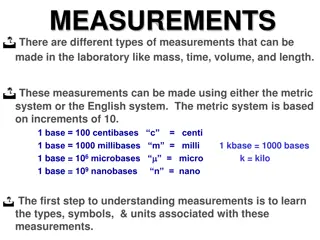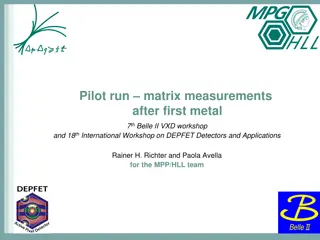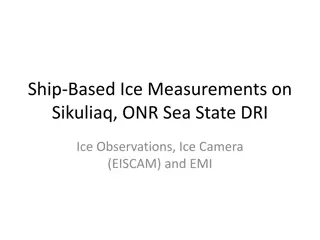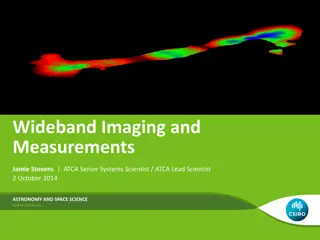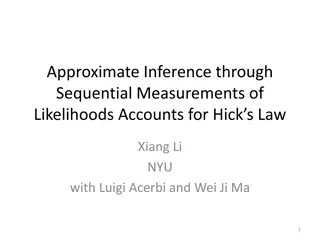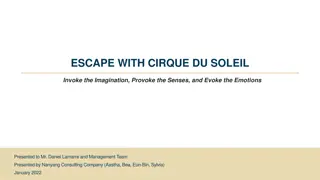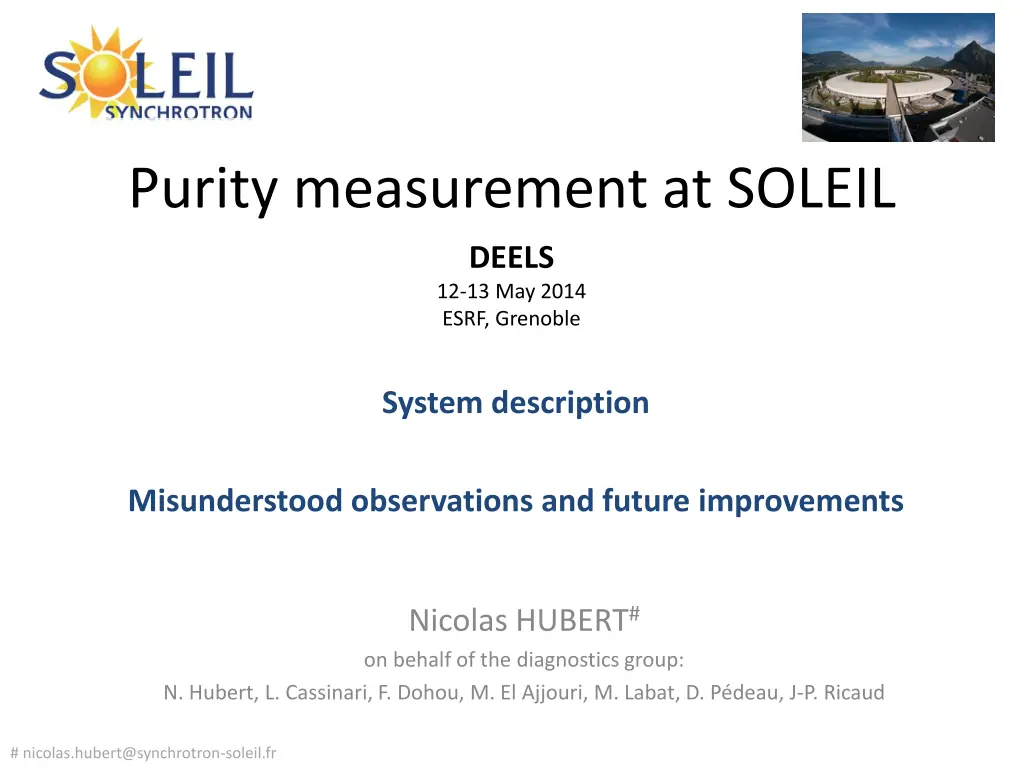
Purity Measurement at SOLEIL DEELS: Observations and Improvements
Explore the purity measurement system at SOLEIL DEELS from May 2014, highlighting observations, conclusions, and future enhancements. The system aims to validate the absence of electrons in free buckets, measure intensity ratios, and ensure beam quality for users. Learn about the detection setup, acquisition scheme, and initial configurations for accurate measurements. Discover insights from Nicolas Hubert and the diagnostics group at Synchrotron SOLEIL.
Uploaded on | 2 Views
Download Presentation

Please find below an Image/Link to download the presentation.
The content on the website is provided AS IS for your information and personal use only. It may not be sold, licensed, or shared on other websites without obtaining consent from the author. If you encounter any issues during the download, it is possible that the publisher has removed the file from their server.
You are allowed to download the files provided on this website for personal or commercial use, subject to the condition that they are used lawfully. All files are the property of their respective owners.
The content on the website is provided AS IS for your information and personal use only. It may not be sold, licensed, or shared on other websites without obtaining consent from the author.
E N D
Presentation Transcript
Purity measurement at SOLEIL DEELS 12-13 May 2014 ESRF, Grenoble System description Misunderstood observations and future improvements Nicolas HUBERT# on behalf of the diagnostics group: N. Hubert, L. Cassinari, F. Dohou, M. El Ajjouri, M. Labat, D. P deau, J-P. Ricaud # nicolas.hubert@synchrotron-soleil.fr
System description Observations Conclusion Beam purity measurement setup Objective: Validate the absence of electrons in free buckets in the storage ring Measure the relative intensity ratio of (unwanted) satellite bunches with respect to the main bunch Quality measurement of the beam delivered to users Used in hybrid (3 quarters + 1 bunch), 8 bunches or 1 bunch filling patterns (100 % of the user beam time in 2013) Specification: Resolution better than 10-5(users request 10-4) Operation: System in operation since 2009 Purity measurement done at least every 8 hours. 2 N. HUBERT, Synchrotron SOLEIL DEELS, 12-13 May 2014,ESRF, Grenoble
System description Observations Conclusion Beam purity measurement setup How does it work?: In air detection On the same photon beam than the one used for the transverse profile measurement (pinhole camera) 1 mm aluminium window Copper attenuator Copper fluorescence X-rays are partially collected by an avalanche photodiode (APD) radiation hardened by a lead shield Sensor block is motorized (protection against radiation induced damages at the measurement position) Copper attenuator 1 mm aluminium window APD in lead shied 3 N. HUBERT, Synchrotron SOLEIL DEELS, 12-13 May 2014,ESRF, Grenoble
System description Observations Conclusion Beam purity measurement setup Acquisition scheme: Measurement based on the time-correlated single photon counting (TC- SPC) method The probability of detecting a photon is less that one per turn No (or limited) pile up Linear measurement Temporal distribution of the pulses reflects temporal distribution of electrons circulating in the storage ring TDC: 23624 channels, 50 ps wide Covering the 1,18 s storage ring rev. period APD S5343 4 N. HUBERT, Synchrotron SOLEIL DEELS, 12-13 May 2014,ESRF, Grenoble
System description Observations Conclusion Beam purity measurement Initial configuration for 430 mA: Counting rate around 4000 counts/mA/s that depends on: APD position APD polarization voltage Discriminator threshold Limitation of the counting rate to stay in a linear range If APD polarization voltage is to high, counting rate increase but linearity is lost (pile- up?) Accumulation is done until reaching required resolution (106) Takes 50 seconds with 5 mA in the main bunch Typical measurements just after the storage ring filling: Purity of ~10-5for the bunch that follows immediately the main bunch Purity of ~10-6 for the other empty bunches 5 N. HUBERT, Synchrotron SOLEIL DEELS, 12-13 May 2014,ESRF, Grenoble
System description Observations Conclusion Beam purity measurement 416 bunches Linear scale Bunch of interest Log scale Zoom on each eighth of the ring (52 bunches) Log scale 6 N. HUBERT, Synchrotron SOLEIL DEELS, 12-13 May 2014,ESRF, Grenoble
Setup description Observations Conclusion Beam purity measurement Setting is: very sensitive to: APD polarization voltage Discriminator threshold dependant to: The APD that is used (same reference) Impacts the counting rate and then the measurement resolution and linearity All settings have to be redone when changing the APD Future improvements: Tests ongoing to simplify the acquisition chain by suppressing the discriminator N. HUBERT, Synchrotron SOLEIL 7 DEELS, 12-13 May 2014,ESRF, Grenoble
Setup description Observations Conclusion Beam purity measurement Misunderstood observations: Measurement is deteriorated if integration time is too long (>1 min) or measurements repeated frequently (due to APD heating?) Usual measurement Noisy measurement High resolution (channels) view shows counts in channels where it s not possible to have electrons/photons -> Integration time limited to one minute -> repeated measurements may give deteriorated results -> Switching OFF APD power-supply between measurements is mandatory N. HUBERT, Synchrotron SOLEIL 8 DEELS, 12-13 May 2014,ESRF, Grenoble
Setup description Observations Conclusion Beam purity measurement Misunderstood observations: Whereas we expect detecting only Cu fluorescence photons, APD counting rate is affected by standard (black) scotch layer in front of the APD (used to prevent visible light hitting the APD): One additional layer divided the counting rate by a factor of 2 Are we really counting only copper fluorescence X-rays? Silicon drift detector spectrum measurement Cu (K =8,05 keV, K =8,91 keV) Cu pile up APD efficiency is given down to 200 nm only What about shorter wavelengths? High energy (>1 kEv) photon spectrum shows as expected only copper fluorescence lines N. HUBERT, Synchrotron SOLEIL 9 DEELS, 12-13 May 2014,ESRF, Grenoble
System description Observations Conclusion Beam purity measurement Conclusion: Purity measurement is a daily used diagnostic at SOLEIL Achieved resolution is 10-6, enough for our need so far. But: Some observations are still not well understood Setting is still to long to optimize Feedback from you: From your experience any advice is welcome to: Better understand why we can t perform repeated measurements without apparition of background noise. Better understand the spectrum of the photons that are detected Optimize (simplify) the setting Thank you for your attention N. HUBERT, Synchrotron SOLEIL 10 DEELS, 12-13 May 2014,ESRF, Grenoble











